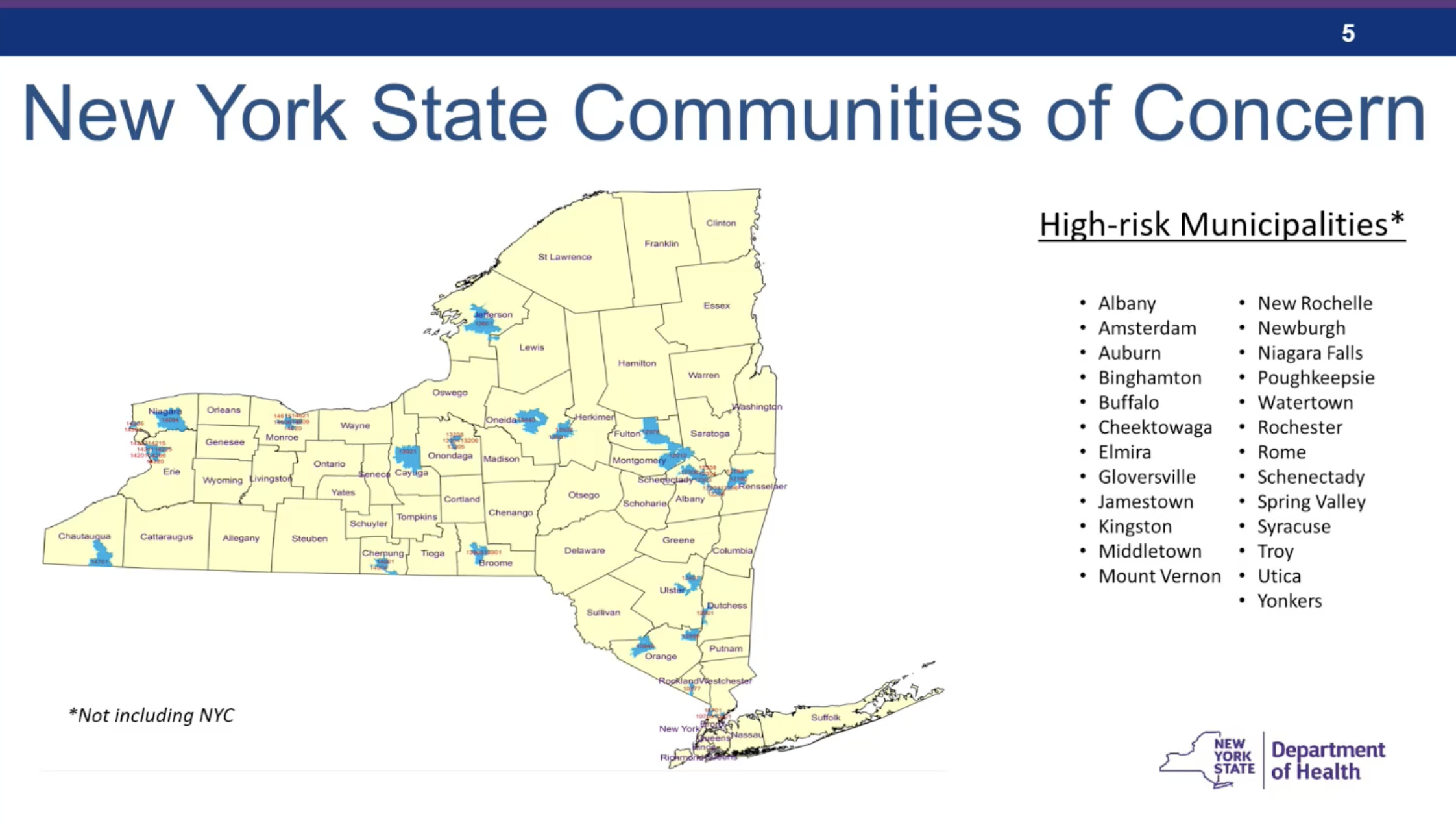
What Happened
In 2023, the New York State legislature enacted a law establishing a state rental registry and requiring proactive inspections of targeted rental properties1 to identify lead hazards in “communities of concern.” The state law, which goes into effect in November 2025, builds on Rochester’s successful program, launched almost 20 years ago. The law exempts New York City because it adopted similar requirements a few years ago.
The state’s Department of Health (NYSDOH) is the primary state agency responsible for implementing the law in collaboration with other state agencies and local health departments. In 2023, the legislature provided $39.5 million a year for three years to implement the law.
At an impressive November 2023 meeting of the state’s Advisory Council on Lead Poisoning Prevention, NYSDOH staff: 1) reviewed its plans; 2) discussed key elements of a potential rule; 3) tentatively identified communities of concern;2 and 4) indicated that 282,000 units will need to be tested for lead dust hazards by an EPA-certified lead risk assessor. The agency selected the communities because they have a “disproportionately high prevalence of children with elevated blood lead levels and a significant number of rental properties with two or more units constructed prior to 1980.” At the meeting, NYSDOH said it hoped to publish the proposed rule before the end of 2023.
It has not yet done so.
In May 2024, the state’s Assembly passed a groundbreaking bill with a bipartisan vote of 105-45 designed to complement the rental registry by requiring property owners, anywhere in the state, who sell residential property after July 2024 to have a one-time inspection for the presence and location of lead-based paint.3 Unfortunately, the Senate ran out of time to consider the bill by June 17, the end of its two-year session.
Under the bill, the seller would have to provide the inspection report to not only the buyer, but also send it to the county registrar to be recorded on the title and to NYSDOH so it can be posted on the state’s registry. To reduce the burden on sellers, the state agreed to partially offset the inspection costs from their taxes. In addition, buyers would not be able to waive their right to conduct a risk assessment or inspection. This change is not without precedent; for decades Massachusetts has required inspections for homes where a young child resides.
The statewide inspection requirement would have complemented a mandate adopted by New York City in 20204 that requires that all rental properties of units built before 1960 to be inspected by August 2025.
Why it Matters
Given what we now know about the risks posed by even low levels of exposure to lead, our public health goal must be primary prevention, where we prioritize preventing people’s exposure to lead before they are exposed. In contrast, reacting to children with elevated blood levels by preventing further exposure is secondary prevention, which is valuable to identify where primary prevention efforts have failed and must be strengthened.
While the U.S. has seen significant progress in reducing children’s overall exposure to lead, our primary prevention efforts regarding lead-based paint are falling short. HUD estimates that in 2018–19, about 34.6 million homes had lead-based paint, down from 37.1 million in 2005. Of these, 84%, about 29 million, had one or more lead-based paint hazards,5 and 3.3 million of those homes had children under the age of 6. In a shift since 2005, HUD found that no significant differences in lead-based paint hazards by tenure, urbanization, race, or ethnicity, but they remained for income.
For lead-based paint, primary prevention includes:
- Systematically identifying where lead-based paint actually is through an inspection using an x-ray fluorescent (XRF) device. With this information, people can avoid disturbing the lead-based paint and, ultimately, abate it when the opportunity arises.
- In homes with lead-based paint, regular proactive testing for lead hazards and, when they are found, going beyond simply cleaning to fix the conditions that cause paint to deteriorate.
- Transparent documentation to empower buyers and renters to make informed choices and incentivize sellers and landlords to proactively abate lead-based paint.
New York’s 2023 law, when implemented, will advance the second two items for rentals, and the bill that failed to pass in 2024 would have done it for all property being sold.
Our Take
We applaud New York for joining Maryland, Massachusetts, and Rhode Island as states with proactive dust wipe testing programs and online rental registries. The state has made a major commitment to primary prevention that, assuming compliance rates are high, should yield tremendous benefits to reducing children’s (and adult’s) exposure to lead in the communities of concern.
However, we are concerned that NYSDOH has not published a proposed rule despite hoping to do that at the end of 2023. And, based on the discussion raised by the Council at the November 2023 meeting, NSYDOH needs to pay particular attention to how it ensures compliance happens in an equitable manner.
For other states and communities considering a rental registry or proactive clearance testing, we encourage you to watch the 2-hour recording and the excellent discussion between agency staff and council members.
We were disappointed that New York Senate did not pass the bill that would have required every home built before 1978 to have a lead-based paint inspection prior to its sale and be transparent by requiring the reports be attached to the title and are added to the registry. This would have been important—but long needed—legislation that remedies the serious flaws we have seen with the implementation of the federal disclosure law. Hopefully, the legislature will consider the proposal next year.
We also encourage EPA to update its definition of lead-based paint and its hazard standard consistent with the 2021 order from the Ninth Circuit Court of Appeals. With states and municipalities focusing more on primary prevention and considering requiring test of paint, dust, and soil, we need those tests to be compared against to updated limits that reflect the law and the science. Using an outdated limits risks misleading people that there are no hazards.
Next Steps
While Unleaded Kids is a nationally focused organization, we closely monitor state-level efforts that can significantly reduce childhood lead exposure. The success of these efforts can serve as models to propel efforts in other states and at the federal levels.
We look forward to NYSDOH publishing a proposed rule soon. We welcome the opportunity to provide feedback along with other experts in the state who have been integral to advancing this rule.
We further expect NYSDOH to finalize the rule in a timely manner after giving careful and serious consideration to the comments received. We encourage the department to actively seek guidance from its Advisory Council on Lead Poisoning Prevention so that the program is effective in proactively reducing exposure to lead-based paint hazards.
We also hope state and local agencies in New York will submit compelling lead hazard reduction grant proposals to HUD by the August 19 filing deadline so they can secure additional funding to help private landlords remediate hazards found through the dust wipe testing. HUD has up to $490 million available. We expect that, unfortunately, the grant funding is likely to be lower in future years.
Finally, we hope the New York legislation passes the inspection bill, continues funding that will aid NYSDOH in enforcement, and, as the health benefits becomes clear, expands the program statewide so all children, even those in small towns and rural areas, benefit.
- It applies to units in buildings built before 1980 with two or more housing units whose property class designation are eligible for rental, lease, let, or hiring out. ↩︎
- New York City is not covered by the law since it has substantially similar requirements enacted in 2020. At a November 8, 2023, meeting, NYS DOH identified communities as concern: Albany, Amsterdam, Auburn, Binghamton, Buffalo, Cheektowaga, Elmira, Gloversville, Jamestown, Kingston, Middletown, Mount Vernon, New Rochelle, Newburgh, Niagara Falls, Poughkeepsie, Watertown, Rochester, Rome, Schenectady, Spring Valley, Syracuse, Troy, Utica, and Yonkers. Rochester already has a lead hazard inspection program. ↩︎
- The proposed definition of lead-based paint was paint with more than 0.5 milligrams of lead per square centimeter (mg/cm2)—half of the federal definition—as measured by an x-ray fluorescent (XRF) device. If XRF reading is inconclusive, then it shall be confirmed if lab analysis shows level is greater than 90 parts per million (ppm)—compared to 5000 ppm in the federal definition. Note that EPA must reconsider whether to tighten its definition of lead-based paint pursuant to a 2021 order from the Ninth Circuit Court of Appeals. ↩︎
- See § 27-2056.4 paragraph (a-1). ↩︎
- Based on the current EPA standard of 10 micrograms per square foot (μg/ft2) for floors and 100 μg/ft2 for windowsills. ↩︎
